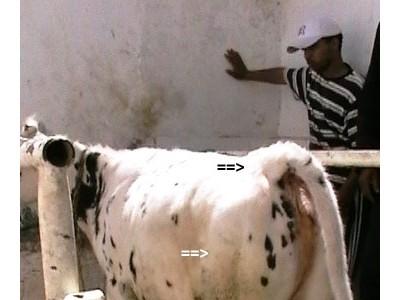Diseases of Cattle: BLACKLEG

Blackleg is a highly fatal disease of young cattle caused by the spore forming, rod shaped, gas producing bacteria Clostridium chauvoei. The spores of the organism can live in the soil for many years. The bacteria enters the calf by ingestion and then gains entrance to the body through small punctures in the mucous membrane of the digestive tract. Cattle that are on a high plane of nutrition, rapidly gaining weight and between 6 months and 2 years of age are most susceptible to the disease. The disease is not transmitted directly from sick animals to healthy animals by mere contact.
The first sign observed is usually lameness, loss of appetite, rapid breathing and the animal is usually depressed and has a high fever. Characteristic swellings develop in the hip, shoulder, chest, back, neck or elsewhere. First the swelling is small, hot and painful. As the disease progresses, the swelling enlarges and becomes spongy and gaseous. If you press the swelling, gas can be felt under the skin. The animal usually dies in 12 to 48 hours. In most cases the animal is found dead without being previously observed sick. The speed with which blackleg kills usually makes individual treatment useless.
Blackleg is almost entirely preventable by vaccination. The most commonly used clostridial vaccination in cattle is the 7-way type which protects against Clostridium chauveoi (blackleg), Clostridium septicum and Clostridium sordelli (malignant edema), Clostridium novyi (black disease), and three types of Clostridium perfringens (enterotoxemia).
Có thể bạn quan tâm
 Make lameness control a priority this winter
Make lameness control a priority this winter As farmers prepare to house their cows for the winter months, now is the perfect time to review lameness protocols to incorporate the latest research findings
 Diseases of Cattle: ANAPLASMOSIS
Diseases of Cattle: ANAPLASMOSIS Anaplasmosis is a vector-borne, infectious blood disease in cattle caused by the rickesttsial parasites Anaplasma marginale and Anaplasma centrale.
 Diseases of Cattle: ANTHRAX
Diseases of Cattle: ANTHRAX Anthrax, a highly infectious and fatal disease of mammals and humans, is caused by a relatively large spore-forming rectangular shaped bacterium called Bacillus